Greya piperella
Olle PellmyrAdult Characteristics
Wing expanse 16.5-21.5 mm. Forewings white or cream colored in females, rarely with stramineous tinge in females from Alberta, and with gray tinge in males; numerous fine spots scattered over wing, with diameter less than half those of punctiferella, and not coalescing. Rare specimens have many spots lost, and only those in the apical portion are present. Hindwings darker gray.
Comparison with Similar Species
G. piperella and females of G. mitellae can possibly create problems of identification. Greya punctiferella is a smaller moth with yellow base color and more smeared spots. The female of G. mitellae is much smaller, yellow base color, more rounded forewing shape, and dark brown hindwings.
Host, Oviposition, and Larval
Feeding Habits
The species feeds on Heuchera cylindrica in the north, and on H. micrantha in California (Saxifragaceae). Eggs are laid in the peduncle of the host, and larvae mine in it. Nothing in known about later instars.

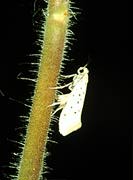
Female ovipositing into H. cylindrica peduncle.
Geographic Distribution
Dry interior portions of southern British Columbia to central Oregon, reaching westward to western Montana. An isolated population is known from central California. Specimens from New Mexico and Utah have tentatively been identifed as this species.
Habitat
In open, grassy pine forest or on rockfaces in open country where the host is found growing in crevices and ledges. Elevational range 200-2300 m. It often coexists with G. enchrysa and G. politella.

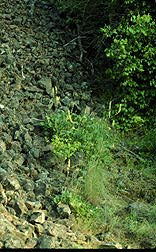
Characteristic habitat in Nez Perce Co., Idaho; Heuchera grows along lower edge of talus.
Ecological Notes
Greya piperella drinks nectar from the flowers of its host, but there is no evidence for pollination function in the species (Pellmyr et al. 1996).
Further ecological aspects of G. piperella and the species that it interacts with are currently under study by John Thompson and David Althoff at Washington State University.
Phylogenetic Notes
In a phylogenetic analysis of a portion of mitochondrial DNA, G. mitellae was nested within Greya piperella (Brown et al. 1994). It is evident that speciation of G. mitellae has occurred so recently that the mitochondrial lineages have not yet been assorted. Greya mitellae reflects a concurrent habitat and host shift, and it has undergone striking morphological evolution particularly in the male.
References
Brown, J.M., O. Pellmyr, J.N. Thompson & R.G. Harrison. 1994. Phylogeny of Greya (Lepidoptera: Prodoxidae), based on nucleotide sequence variation in mitochondrial cytochrome oxidase I and II: congruence with morphological data. Mol. Biol. Evol. 11:128-141.
Davis, D.R., O. Pellmyr & J.N. Thompson. 1992. Biology and systematics of Greya Busck and Tetragma n. gen. (Lepidoptera: Prodoxidae). Smiths. Contrib. Zool. 524:1-88.
Title Illustrations

| Scientific Name | Greya piperella |
|---|---|
| Location | Crook Co., Oregon, USA |
| Specimen Condition | Dead Specimen |
| Sex | Male |
| Image Use |
 This media file is licensed under the Creative Commons Attribution-NonCommercial License - Version 3.0. This media file is licensed under the Creative Commons Attribution-NonCommercial License - Version 3.0.
|
| Copyright |
© 1996
Olle Pellmyr

|
| Scientific Name | Greya piperella |
|---|---|
| Location | Nez Perce Co., Idaho, USA |
| Specimen Condition | Dead Specimen |
| Sex | Female |
| Image Use |
 This media file is licensed under the Creative Commons Attribution-NonCommercial License - Version 3.0. This media file is licensed under the Creative Commons Attribution-NonCommercial License - Version 3.0.
|
| Copyright |
© 1996
Olle Pellmyr

|
About This Page
Olle Pellmyr

University of Idaho, Moscow, Idaho, USA
Page copyright © 1996 Olle Pellmyr
 Page: Tree of Life
Greya piperella .
Authored by
Olle Pellmyr.
The TEXT of this page is licensed under the
Creative Commons Attribution-NonCommercial License - Version 3.0. Note that images and other media
featured on this page are each governed by their own license, and they may or may not be available
for reuse. Click on an image or a media link to access the media data window, which provides the
relevant licensing information. For the general terms and conditions of ToL material reuse and
redistribution, please see the Tree of Life Copyright
Policies.
Page: Tree of Life
Greya piperella .
Authored by
Olle Pellmyr.
The TEXT of this page is licensed under the
Creative Commons Attribution-NonCommercial License - Version 3.0. Note that images and other media
featured on this page are each governed by their own license, and they may or may not be available
for reuse. Click on an image or a media link to access the media data window, which provides the
relevant licensing information. For the general terms and conditions of ToL material reuse and
redistribution, please see the Tree of Life Copyright
Policies.
Citing this page:
Pellmyr, Olle. 1996. Greya piperella . Version 01 January 1996 (under construction). http://tolweb.org/Greya_piperella/12318/1996.01.01 in The Tree of Life Web Project, http://tolweb.org/




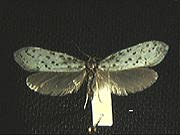
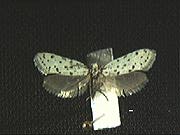
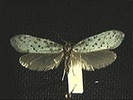



 Go to quick links
Go to quick search
Go to navigation for this section of the ToL site
Go to detailed links for the ToL site
Go to quick links
Go to quick search
Go to navigation for this section of the ToL site
Go to detailed links for the ToL site